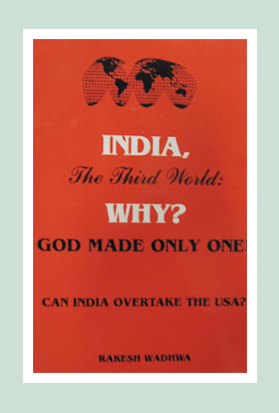Why India and Nepal Rank Low in Economic Freedom Index
 On the face of it, economic freedom is a simple concept. However, it encompasses every aspect of an individual’s life. Economic freedom defines the standard of living and has a significant influence on the quality of life. It influences a person’s right to choose how to be productive and what profession to pursue. It is the engine that drives opportunity, prosperity and well-being in any society or economy.
On the face of it, economic freedom is a simple concept. However, it encompasses every aspect of an individual’s life. Economic freedom defines the standard of living and has a significant influence on the quality of life. It influences a person’s right to choose how to be productive and what profession to pursue. It is the engine that drives opportunity, prosperity and well-being in any society or economy.
“Economic freedom is a crucial component of liberty. It empowers people to work, produce, consume, own, trade, and invest according to their personal choices,” says the heritage.org site.
Measuring Economic Freedom
Since economic freedom is such an important concept, it is essential to measure it. This is precisely what the Index of Economic Freedom aims at doing. Since 1995, this index has measured and tracked economic well-being and its evolution across the globe. The Index of Economic Freedom covers ten parameters of freedom in 184 countries and is published annually by The Wall Street Journal and The Heritage Foundation. It is based on the idea that ‘When institutions protect the liberty of individuals, greater prosperity results for all,’ which Adam Smith outlined in his treatise on economics called the Wealth of Nations.
The Parameters for Measuring Economic Freedom
The Index awards a relative rank to each of the 184 countries covered by arriving at an overall score, which in turn takes into account the ten benchmarks of economic freedom. These ten benchmarks are: Business Freedom, Trade Freedom, Fiscal Freedom, Government Spending, Monetary Freedom, Investment Freedom, Property Rights, Freedom from Corruption and Labor Freedom.
These ten measures are reviewed against macro-economic parameters, which include Tariff Rate, Income Tax Rate, Corporate Tax Rate, Population, GDP, GDP Per Capita, Unemployment Rate, Inflation Rate, FDI Inflow, Tax Burden as a percentage of GDP and Government Expenditure as a percentage of GDP.
The 2012 Index of Economic Freedom
According to this year’s index, the ranks of India and Nepal are:
India: 123
Nepal: 147
What has contributed to the dismal ranking of these two countries? This is especially interesting in view of the ranking attained a country like Sri Lanka, which stands at the 97th position as per the index. Our current state of affairs is not very encouraging. How prepared are we to answer the call for economic freedom?
A Look at India
India’s rank is based on a score of 54.6 in the economic freedom index, unchanged from last year. The absence of a smoothly functioning legal framework seems to undermine the blistering rate at which its economy is burgeoning. The state still interferes through state owned enterprises in the regional economic affairs, and failed attempts at establishing a socialist presence means that the government still has a free rein in economic activity. Market reforms have had a lopsided success rate at implementation, combined with a regulatory system that restricts the growth of the private sector and ever increasing inflation rates. The platform for macroeconomic stability is thus shaky. Terrorist attacks, scams, scandals and the Commonwealth Games exposé among others have dealt a severe blow to the image of financial security in the country.
Fiscal Deficit
The highest income and corporate tax rates are 30.9% and 33.22%, respectively. The tax burden is 16.8% of total domestic income, and the government spends 29% of the total Gross Domestic Product (GDP). There hence remains a budget balance deficit to the extent that public debt has reached a high of 64.1% of the GDP.
The Judiciary System
The judiciary is suffering a lack of uniform implementation of laws and insufficient operational freedom. Legal proceedings remain prone to postponement, manipulation by political duress and exorbitant charging. Corruption and favouritism have made procuring government contracts available to a select few.
Regulatory Control
Entrepreneurial ventures face hurdles at every step, the labour regulatory framework is still in developmental stages and the major source of employment is still indirect economy. Rampant redtapism means that it takes an average of more than 200 days to complete a licensing requirement and the costs are a staggering 16.8 times the average annual income. State unions still maintain an iron grip on the MRP rates and financial stability has notably weakened.
Open Markets
India’s bureaucratic establishment is not amenable to new investment plans. The trade weighted average tariff rate is a dismal 7.9%; complicated non tariff barriers further inhibit trade growth. The foreign contribution to capital markets is not liquid, and state run institutions control the banking sector and capital markets, in spite of some liberalization reforms being implemented.
A Glance at Nepal
With a score of 50.2, Nepal is ranked 32 out of 41 countries in the Asia-Pacific Region. Its policy of relegating economic control to the central government is not helping it achieve its full economic potential. Property rights are poorly defended by the judicial system here, which is manipulated at will by political intervention. It lacks the entrepreneurial vigor needed for broad spectrum economic growth. Very little has been done till now to engage in foreign trade, and political instability has not allowed the government to implement essential economic reforms.
Fiscal Deficit
Top corporate tax and income tax rates both stand at 25%. The overall tax burden amounts to 12.2% of the total domestic income, while government spending is 19.9% of total domestic output. Fiscal deficit has contributed to the public debt touching 36% of the total GDP.
The Judiciary System
There is hardly any protection provided for either intellectual or real property rights. The judiciary is inefficient, with the lower echelons more vulnerable to arm-twisting under political duress. Anti corruption measures are not effectively enforced and corruption is particularly rampant in the private sector.
Regulatory Control
Regardless of the streamlining of the approval process for a business launch, other requisites impede it, as they are costly and time consuming. Licensing requirements cost seven times that of the average annual income and take more than 200 days to complete. Labor regulations are virtually nonexistent. Unemployment is rampant and inflation has spiked significantly.
Open Markets
The trade weighted tariff rate is atrociously high at 14.3% and non tariff barriers further hamper trade. Private investment is affected by political instability and a less than sufficient investment plan is keeping foreign investment in the lurch. The finance sector is chaotic and government hold on the economy is significant.
The Asia-Pacific region not only has low ranking countries like India and Nepal, but also the highest ranking nations, with Hong Kong at #1 and Singapore at #2. Among the BRIC nations, Brazil is ranked 99, Russia is at 144 and the Asian dragon (China) is at 138. With India and Nepal falling under the “mostly unfree” category, it is time for the government to pay greater attention to economic freedom.
 Rakesh Wadhwa. Ever since, I was a school boy, I knew India was on the wrong path. Socialism was just not what we needed to get ahead. Government controlled our travel; government controlled our ability to buy and sell; and government controlled our freedom to move our money. My life has focused on the inherent rights people have. When I was in college, I never understood, what the governments meant by their "socialistic attitude". If people are free to buy, sell and move their capital themselves without any restrictions by state, then the welfare of people is inevitable & hence the countries they live in will become wealthy. The government has no right whatsoever, to point a finger at me or my business. I am not a revolutionary. I just want to light up my cigarette and not get nagged about it. I believe in non-interfering attitude to attain more.
Rakesh Wadhwa. Ever since, I was a school boy, I knew India was on the wrong path. Socialism was just not what we needed to get ahead. Government controlled our travel; government controlled our ability to buy and sell; and government controlled our freedom to move our money. My life has focused on the inherent rights people have. When I was in college, I never understood, what the governments meant by their "socialistic attitude". If people are free to buy, sell and move their capital themselves without any restrictions by state, then the welfare of people is inevitable & hence the countries they live in will become wealthy. The government has no right whatsoever, to point a finger at me or my business. I am not a revolutionary. I just want to light up my cigarette and not get nagged about it. I believe in non-interfering attitude to attain more. 
 The Bastiat Award is a journalism award, given annually by the International Policy Network, London. Bastiat Prize entries are judged on intellectual content, the persuasiveness of the language used and the type of publication in which they appear. Rakesh Wadhwa won the 3rd prize (a cash award of $1,000 and a candlestick), in 2006.
The Bastiat Award is a journalism award, given annually by the International Policy Network, London. Bastiat Prize entries are judged on intellectual content, the persuasiveness of the language used and the type of publication in which they appear. Rakesh Wadhwa won the 3rd prize (a cash award of $1,000 and a candlestick), in 2006.
6 Comments
Ratna
December 16, 2012One is courption other is blady politics.
Rajendra Adhikari
December 19, 2012dear author, you have written a very good article on Economic Freedom. Congratulation
Keshav Prasad Bhattarai
December 19, 2012Yes I agree; economic freedom is the foundation of all other freedoms and road to faster progress and success of the nations. But such an ensured economic freedom – I think is only possible when there are small but highly effective and accountable governments at local and central level, meritocracy, rule abiding people and political parties that truly represent people and their concerns, their strengths, trusts and their hopes.
Shailendra Guragain
December 19, 2012Very true. But how to overcome from hostages from the our current leaders, is the challenges now.
Ramesh Paudel
December 20, 2012Good analysis, keep it up.
sushil ghimire
December 24, 2012nice one sir